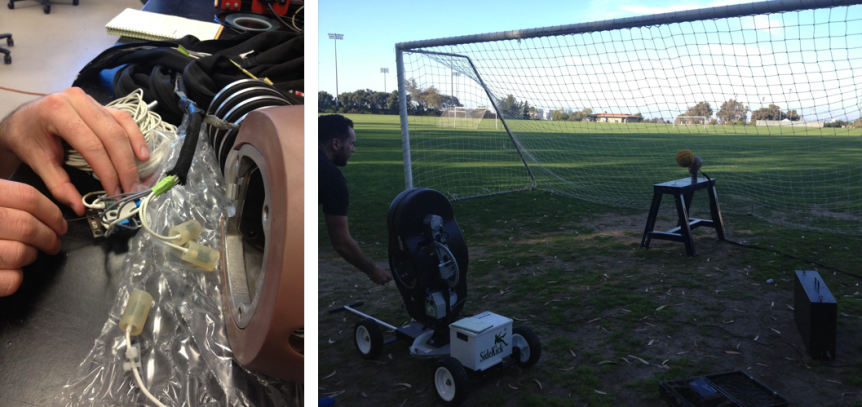Over the weekend new accelerometers were installed into the ATD. With these new accelerometers came a simpler DAS program. The program has multi-modal, with the most important being the “real time” and “collect” modes. In “real time” mode, the program operates like an oscilloscope, so we can verify the functionality of the accelerometers by applying impacts to the ATD head. In “collect” mode, the program automatically calibrates and arms the accelerometers to expect an impact. As soon as the ball collides with the head, the accelerometers take data for approximately 0.9 seconds at a sampling rate of 10000Hz.
We tested two types of sports balls, water polo and soccer. For water polo, we tested pressures of 10, 12, 13, 14, 15, and 17 psi (the average is 13-14 psi). For soccer, we tested pressures of 5, 7, 8, 9, and 11 psi (the average is 8 psi). We launched these balls at each pressure at the ATD with speeds from 35 to 55 mph in 5 mph increments. The water polo tests involve a comparison of forces experienced while wearing the KAP7 goalie head gear to that of an unprotected head. Therefore, at each pressure and each speed, 12 runs are done: 6 with the ATD unprotected, and 6 with the ATD wearing headgear.
Each run takes approximately 3 minutes from start to end. This involves calibration and loading of the TSF (test setup file) and naming of the data set, arming of the DAS, ball impact, and review of the data to ensure that it is not erroneous. Since the ATD lease ends next week, we will complete all testing and data acquisition this week.
By Sherilyn Bumatay, Concussive Forces in Competitive Sports

